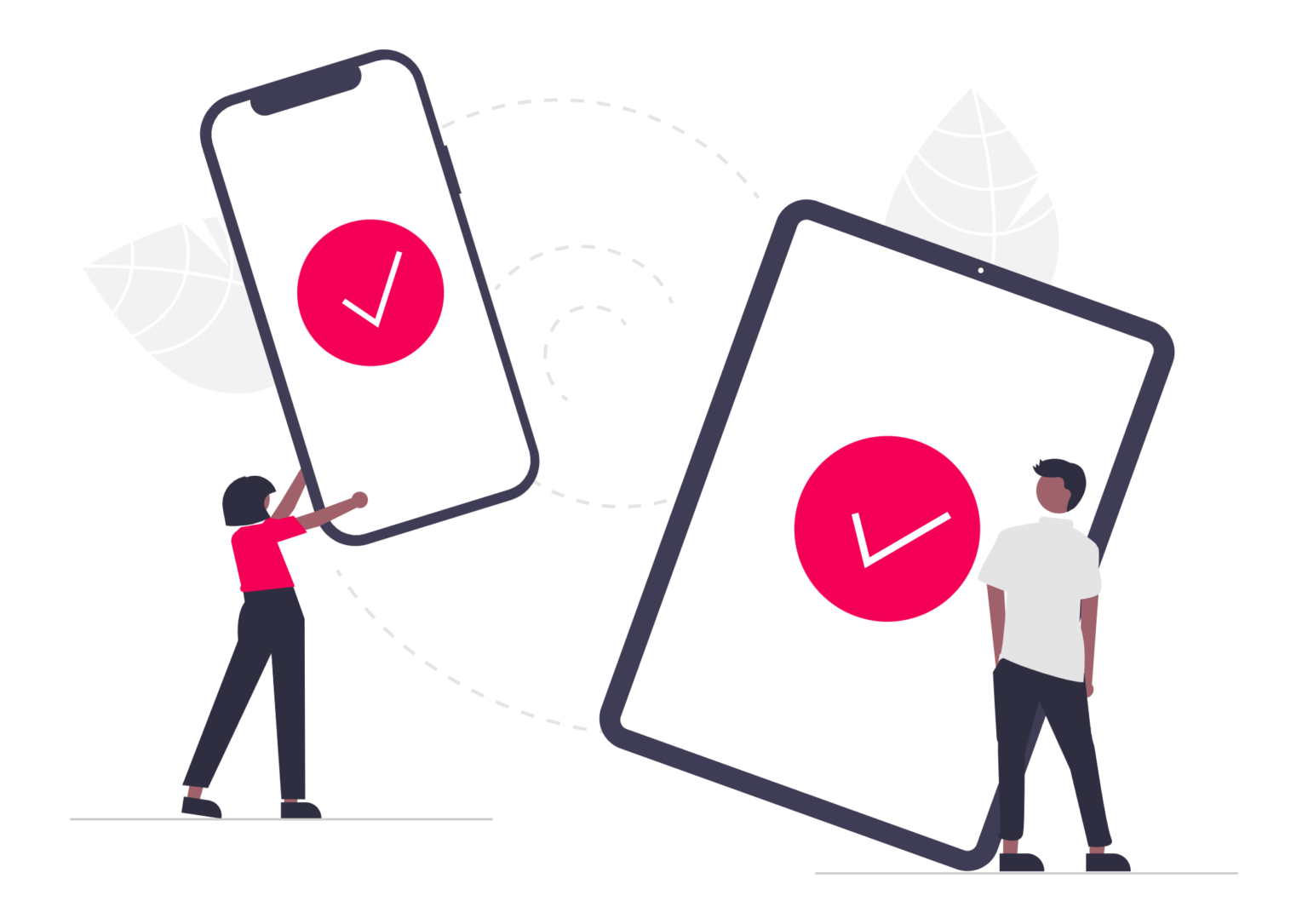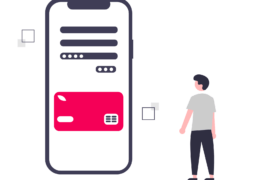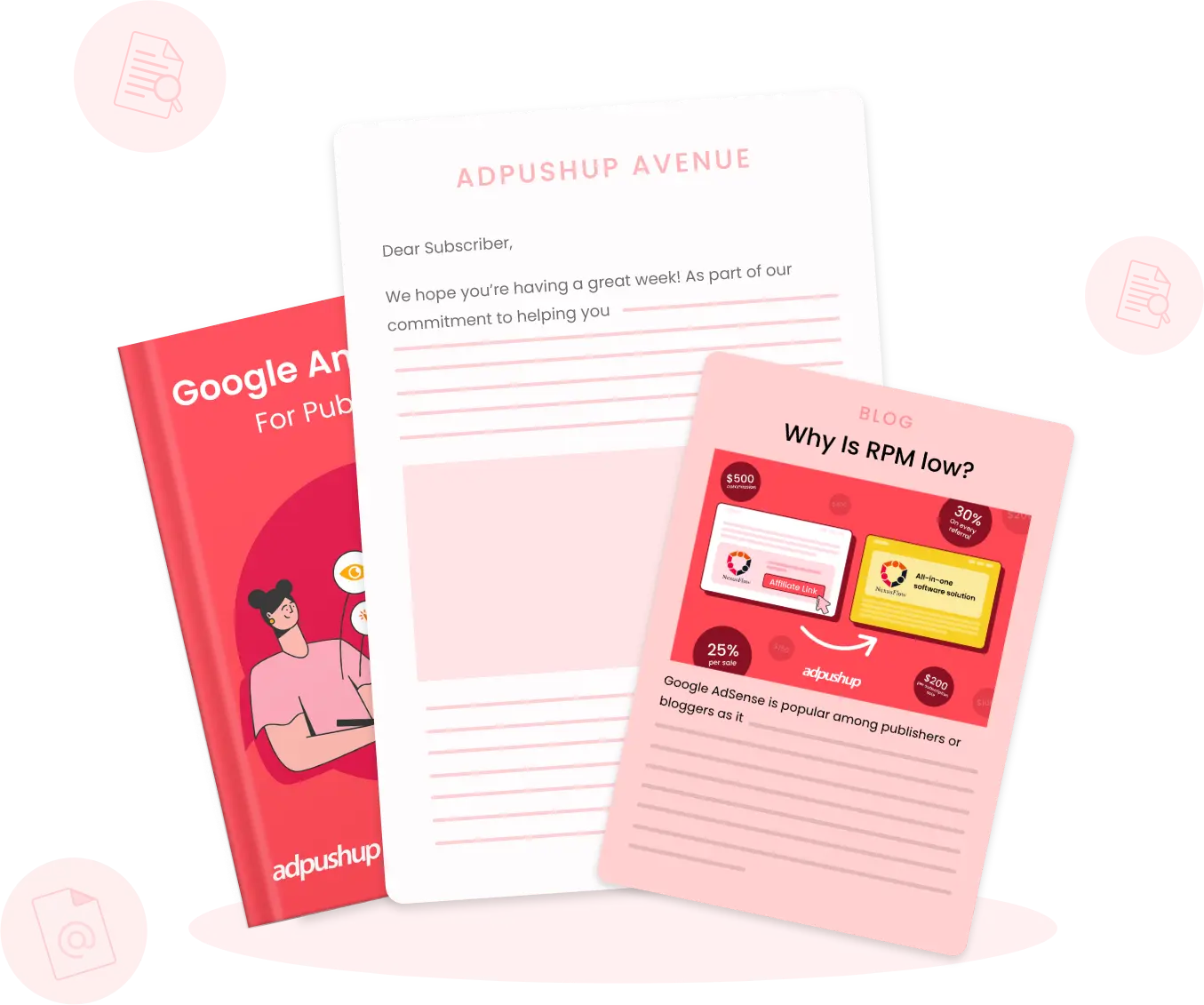Understand “what is app monetization” inside and out—no jargon, just the key strategies and insights you need to drive revenue and streamline decision-making.
Creating an app is one thing. Making it profitable is another. For app owners, the challenge isn’t just attracting users. It’s about turning their activity into steady revenue. App monetization is the process of generating income from an app, and it requires a clear strategy.
This app monetization guide will answer all the basic questions such as “what is app monetization”, what does it involve, and how publishers can approach it to drive consistent revenue.
What is App Monetization?
App monetization is a way for app publishers to generate revenue with their app’s user base. Mobile apps can generate revenue in various ways, including in-app advertising, in-app purchases, freemium models, and more.
According to TechCrunch, by 2025, in-app spending will reach $270 billion. This statistic doesn’t even include in-app ad revenues and several other forms of monetization, which topped $31.9 billion in Q4 2020.
Now that we know “what is app monetization”, let’s have a look at the means of monetizing the apps, which is called “app monetization platforms”.
Top 3 Ad Monetization Platforms
There are plenty of app monetisation platforms out there, but Google AdMob and Meta Audience Network are often the go-to choices for many publishers.
Their strong global reach, variety of ad formats, and generally higher eCPMs make them reliable options.
That said, they do have their downsides. Both platforms have strict policy guidelines, and even unintentional violations can sometimes lead to account bans.
Let’s have a quick look at some of the Ad Monetization Platforms
1. Google AdMob
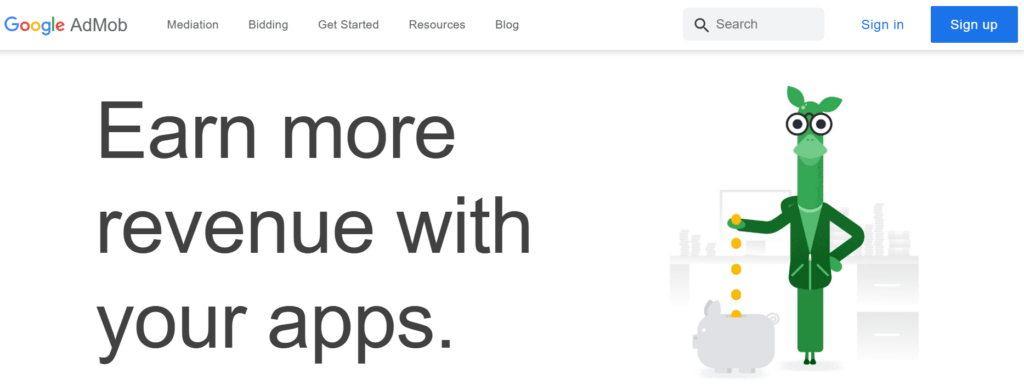
Google AdMob is a popular choice among many publishers since it comes integrated with other Google services. It has an extensive reach, providing access to premium advertisers. Moreover, it comes with multiple ad formats like rewarded ads, interstitial ads, native ads, etc.
It’s a great choice for the app publishers who have newly stepped into the business. It is considerably user-friendly and has a straight-forward implementation process.
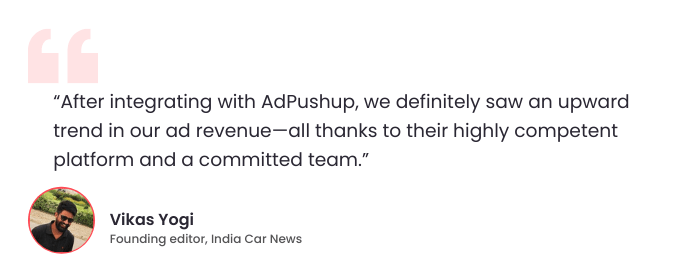
2. Meta Audience Network
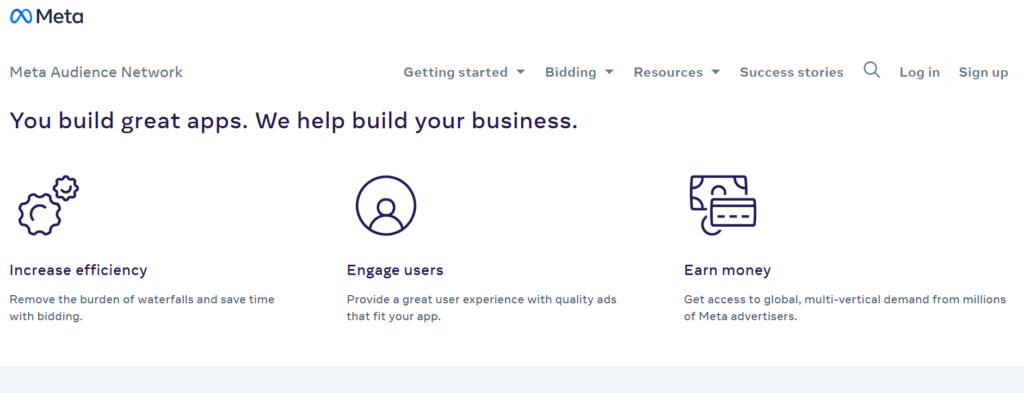
Meta’s advertising platform is another popular choice for reaching a large and diverse audience. The platform is known for its great targeting capabilities and higher fill rates deliverability. It has been found to be a great fit for social apps. Meta supports various ad formats, including images, video ads, carousels, and more.
3. AdPushup
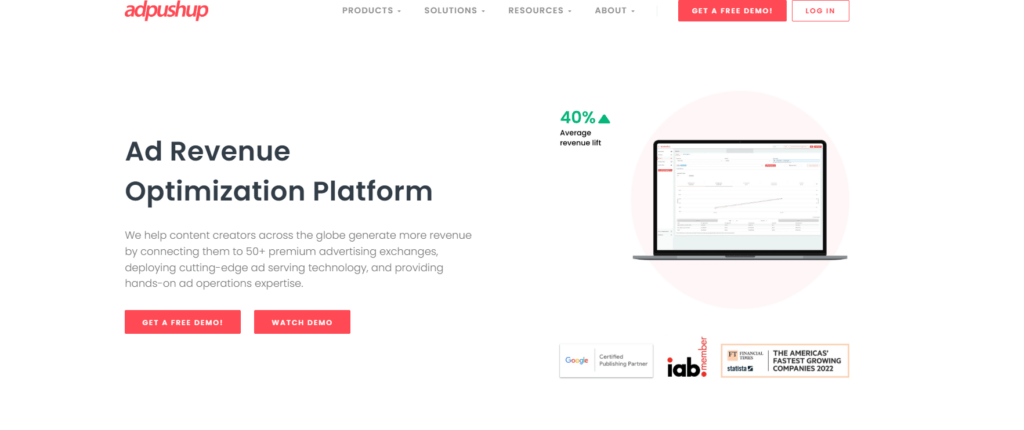
AdPushup offers a flexible monetization stack designed to simplify ad ops for app publishers. Whether you want to enhance your current AdMob setup, switch to a unified SDK, or run advanced ad formats, we’ve got you covered.
Our latency-optimized tech ensures smooth ad performance, while clean APIs and modern SDKs make integration easy, even for small teams.
With transparent revenue share and hands-on support for setup, optimization, and analysis, AdPushup helps you focus on growing your app, not just managing ad tech.
Apart from the above, there are a lot more app monetization platforms out there such as Chartboost, Unity Ads, IronSource, etc. for publishers to explore.
Having that discussed, let’s delve deeper into mobile app marketing and monetization, and take quick a look at some of the app monetization models.
6 Most Popular App Monetization Models
1. Paid Apps
The revenue generating process of this method is pretty straight-forward. As the name suggests, app owners are paid each time their app is downloaded through either play store or app store.
2. In-App Purchases (IAP)
Unlike purchasing the app directly, users in this model buy content or features within the app. That means downloading the app is free, but the features within are paid. This model is popular across gaming, fitness, and productivity apps, driving additional revenue.
3. In-App Advertising
It’s one of the most popular strategies and have always been into app monetization trends. In this model, neither downloading the app nor its features are paid. In the in-app advertising, the apps simply serve ads to users, earning revenue through various ad models like rewarded video ads. It’s often used in freemium apps to generate income.
4. Freemium Model
In this app monetization model, the apps are free to download with paid features for premium content or to remove ads. Spotify is a classic example, offering both free and paid options.
5. Subscription Model
One of the most common models is the subscription model, users pay a recurring fee for continued access. This is common in apps offering ongoing services like news or entertainment, often with free trials.
6. Sponsorship Model
Apps partner with brands to offer exposure, such as displaying logos or ads, often used by apps with large or niche audiences.
Paid vs. Free: What’s the Smarter Monetization Choice?
Paid apps generate upfront revenue but rely heavily on brand trust and polished UX. Moreover, paid models usually suit niche audiences who know what they’re paying for.
Free apps, on the other hand, lower the entry barrier, attract more users, and allow for flexible monetization through ads or in-app purchases.
So, what to choose between the two?
If you’re just stepping into the app monetisation journey and are confused what to go with, a hybrid or freemium model can be feasible. It offers basic access for free, while also allowing premium features, content, or ad-free experiences for paying users. It’s scalable, user-friendly, and built for long-term revenue.
6 Smart App Monetisation Tips
1. Avoid Multiple SKDs
Most app developers rely on in-app ads to earn revenue from free apps. To enable this, they integrate monetization SDKs (Software Development kits) that deliver ads, track engagement, and handle payouts.
Integrating multiple monetization SDKs can be time-consuming and requires constant updates to keep everything running smoothly. App owners spend weeks on setup and ongoing maintenance, diverting attention from core app development. Compatibility issues between SDKs can also cause performance problems.
For publishers, this means delays in monetization, higher operational costs, and a poor user experience if integrations aren’t smooth.
To reduce the complexity, consider adopting a modular monetization stack that lets you choose the level of integration and control you need.
AdPushup’s Zelto Mediation Adapter is a great solution for publishers already using AdMob. It integrates into your existing waterfall setup, requiring minimal development resources, and provides access to additional high-quality demand partners.
2. Balance App Monetisation with UX
Although monetization is important, don’t let it blind you to the importance of user experience.
User experience is one of the most important factors in determining whether an app will be used again. However, if you plan to earn income from your app, you’ll need people to use it. Therefore, you’ll want to maintain a good UX for your users while monetizing.
Put yourself in the users’ shoes.
Do those big, flashing banner ads interfere with their enjoyment of the game, the video, or the article? Does the ad complement the experience?
Does that interstitial ad between levels feel smooth and comfortable, or is it too abrupt?
The best approach is to measure UX from the perspective of a user.
3. Optimize Auctions with Transparent Reporting
Publishers often don’t fully understand how their auctions are being run, which leads to revenue leakage. Without transparency in how auctions and mediation are set up, poor decisions on waterfall priority and partner mix can result in lower eCPMs and reduced revenue.
To fix this, ensure your monetization system offers transparent reporting that lets you see exactly how your auctions are performing.
With AdPushup’s transparent dashboards, you can access data-driven insights that help you identify which partners are underperforming and adjust your waterfall setup accordingly.
4. A/B Testing for Monetization of Apps
A good mobile app should be light, easy to use, and fast. The best way to do that is to A/B test every important component to see what works. Then, based on your A/B testing results, stay agile, and maximize your app’s revenue.
Consider A/B testing the following:
Trial vs. freemium. Which method converts the free users to paying ones?
Sponsored posts vs. traditional ads. UX-wise, which method is better? Which generates the most revenue?
Clicks versus impressions. What is the best return on investment between cost per mile (CPM), cost per click (CPC), and cost per action (CPA)?
Low prices vs. higher prices. Are you better off charging more and making fewer sales or charging less and making more for subscriptions or in-app purchases?
Mobile apps can be A/B tested in nearly every aspect. And A/B test results could sharpen your app monetization abilities, it is worth your effort.
6. Learn from Your Competitors
Before implementing a new app monetization strategy, consider how your competitors monetize their apps.
Don’t copy them. However, it would be helpful to see whether they are doing anything you have yet to consider. Then, you can check if it’s working for them and is a good fit for your app.
Here are a few strategies to identify competing apps:
Identify a broad category where your app fits in the major app stores. Apps with the most downloads in that category will likely be your top competitors.
Check out your app’s reviews. Watch out for reviews that compare your app with others. You can find similar apps through these comparisons.
Do some research once you’ve identified your mobile app competitors. See how they make money by downloading their apps.
What kind of advertisements do they have? Do they offer a freemium subscription service? See what’s working and what isn’t, and learn from their app monetization strategy.
Knowing how to monetize your app is a great start, but tracking your results is what truly makes the difference. Tips are useful, but without measuring their impact, you’re just guessing. Data shows you what’s working, what’s not, and where to optimize.
As app monetisation evolves, it’s no longer just about maximizing revenue — it’s about delivering meaningful value to users while driving sustainable growth. At AdPushup, we believe in empowering publishers with smarter tools, hybrid strategies, and performance-driven technologies that adapt to user behaviour, not disrupt it.
Utkarsh Pandey, Associate Product Manager | AdPushup
That said, here are a few of the metrics you should stay on top of:
3 Crucial Mobile App Monetization Metrics
Tracking the right metrics helps you gauge performance, find out revenue opportunities, and work on your app monetization plan better.
1. App Stickiness
It measures how often users return to your app. A high stickiness score means better engagement and retention.
Formula: (Daily Active Users ÷ Monthly Active Users) × 100
2. ARPDAU (Average Revenue Per Daily Active User)
Shows how much revenue you earn per user each day. It’s a great way to assess the impact of changes in ads or in-app purchases.
Formula: Total Daily Revenue ÷ Daily Active Users
3. eCPM (Effective Cost Per Mille)
eCPM tells you how much revenue you make for every 1,000 ad impressions. A higher eCPM means your ads are converting well.
Formula: (Ad Revenue ÷ Impressions) × 1,000
Monitor these to keep your monetization strategy sharp and scalable.
Key Takeaways
- Understanding “what is app monetization” means being well-versed with the strategies like in-app ads, purchases, and freemium models that turn users into revenue streams.
- Don’t rely on just one method—combine in-app ads, purchases, and subscriptions to maximize revenue potential.
- Leveraging platforms like AdMob or AdPushup can offer targeted solutions and high-quality ads that align with your audience.
- Ads should enhance, not disrupt, the app experience. The more seamless and relevant the ads are, the better your monetization results will be.
- If you’re just starting, consider a hybrid or freemium model. Offering both free and premium content allows for scalability while keeping your users engaged in a way that drives long-term revenue growth.
- Constantly refine your monetization strategy with A/B testing and data insights to ensure you’re maximizing both user satisfaction and revenue.
App Monetisation and Adpushup
AdPushup is a flexible, developer-first app monetization platform built to eliminate integration complexity and maximize ad revenue. Whether you’re a solo developer, a growing app studio, or managing an OTT platform, AdPushup offers multiple solutions, including lightweight AdMob adapters, a unified mobile SDK, and plug-and-play VAST tags.
Gain access to premium demand, optimize performance without tech debt, and monetize smarter, on your terms. Fill out the form below and let Adpushup help.
Frequently Asked Questions
Depending on your business sector and app type, you can use one monetisation model or a combination of them at once. The following are examples of app monetisation models:
1. Advertising and affiliate marketing
2. In-app purchases
3. Paid subscriptions
4. Freemium
5. Sponsorship
6. Crowdfunding
7. Transaction revenue
Customers can pay to unlock functionality or purchase virtual goods from you (weapons, coins). The majority of games use this strategy to increase profits. These include:
1. In-app purchases
2. Affiliate income
3. Subscription
4. Freemium
App monetization works in different manners. Some app owners go with in-app advertising, which enables them to monetize the app’s content within the app. On the other side, some app owners put a price to download their apps. There are multiple such models to make the app monetization work, which are also listed in the blog.

Deepak has a keen eye for detail and a deep understanding of the ad tech landscape. Whether it’s through in-depth articles, thought-provoking insights, or compelling storytelling, he’s dedicated to helping people navigate the complex world of ad tech with the simplicity of his words.
